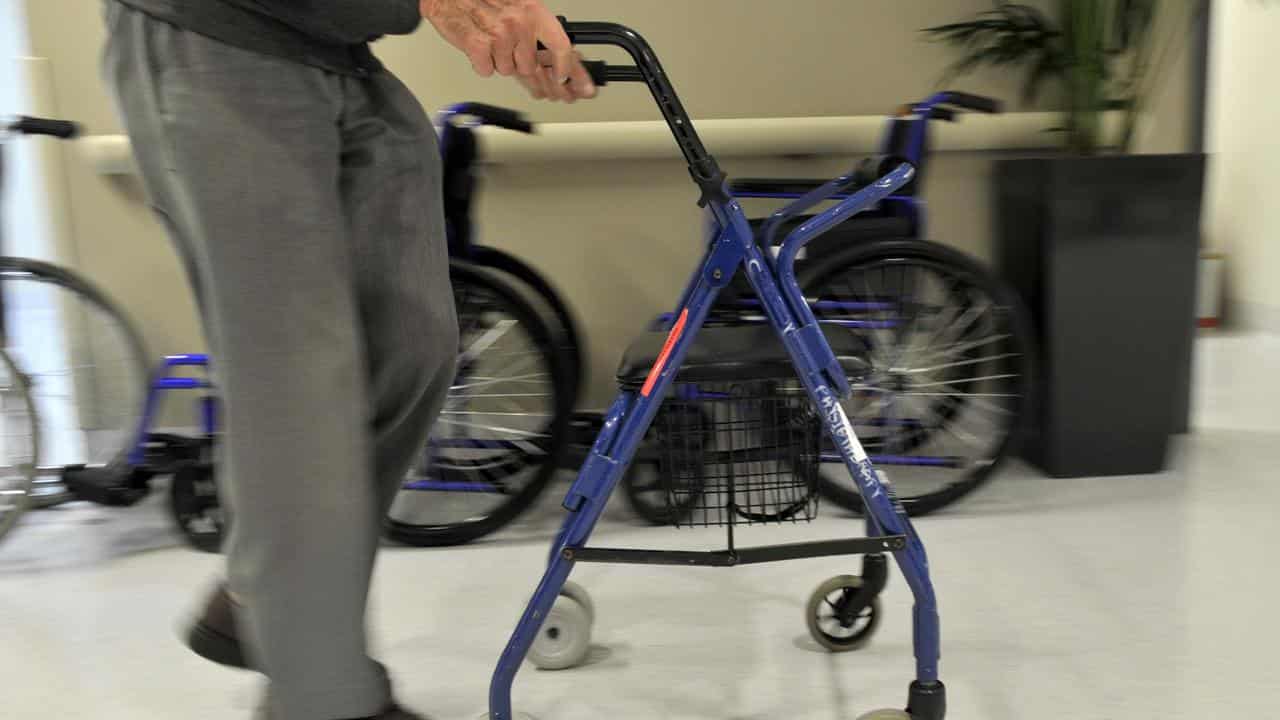
Increasing costs and workforce shortages plaguing aged care are so serious most providers are worried about how Australia's system will cope in years to come.
Seven out of 10 providers are concerned about how the nation will handle a rapidly maturing population, according to the Aged and Community Care Providers Association’s state of the sector survey released on Wednesday.
Recent reforms include a $4.3 billion support at home scheme, which would see the government cover clinical care costs to allow people to live independently for longer, before switching to an aged-care facility.
It's estimated 1.4 million Australians will benefit from the changes expected to come into effect from July 2025, after the government struck a deal with the coalition.
Some 97 per cent of survey respondents were concerned about increasing costs, with half of residential providers reporting they were losing money.
The margins of home care providers declined to $1.80 per client a day in the first half of 2023/24, down from about $3.20 in 2022/23.
More than 90 per cent of providers nominated government funding as a concern, with respondents noting problems were worse in regional and rural areas.
One-in-five smaller providers was not confident in their ability to maintain services in the next 12 months.
Association chief executive Tom Symondson said the survey revealed the sector's realities.
“This is a report about our sector at a critical juncture in its transformation journey, based on feedback from those that deliver care to older Australians every day,” he said.
“It comes amidst a backdrop of financial, workforce and reform challenges - all of significant magnitude.
"The demand for aged care is also growing, highlighting the urgent need to create a system that delivers high quality care now and into the future.”

Despite concerns, 51 per cent of respondents believed aged care reforms were pointing the sector in the right direction.
"Australia’s population is ageing and we need to be ready,” Mr Symondson said.
“It’s critical that funding is sufficient to deliver care and to attract investment so we can build for the future.”
Workforce shortages and ability to meet care minutes requirements were also major concerns.
“Providers are feeling the brunt of worker shortages, with just 36 per cent confident they would be able to recruit enough staff to meet their increased care minutes,” Mr Symondson said.
Under the government's reforms people will still have to make means-tested contributions for help as part of everyday living or support around the house.
A lifetime contribution cap will also be raised under the changes to $130,000 for non-clinical costs.
Recent federal government data showed only 40 per cent of aged-care providers met mandatory targets for total minutes of care for residents, and for care given by registered nurses, in the three months to the end of June.
About a quarter of for-profit providers met both targets, compared with 44 per cent of not-for-profits.
A spokesperson for Aged Care Minister Anika Wells said the government had recently invested an additional $5.6 billion into the sector to ensure it became more equitable, sustainable and trusted.
"We know in the next 40 years, the number of Australians aged over 65 is expected to more than double, with those aged over 85 to more than triple," they said.
"That’s why we’ve introduced the bill for a new rights-based Aged Care Act into parliament.
"These once-in-a-generation aged care reforms will deliver certainty and sustainability to the aged care system."









